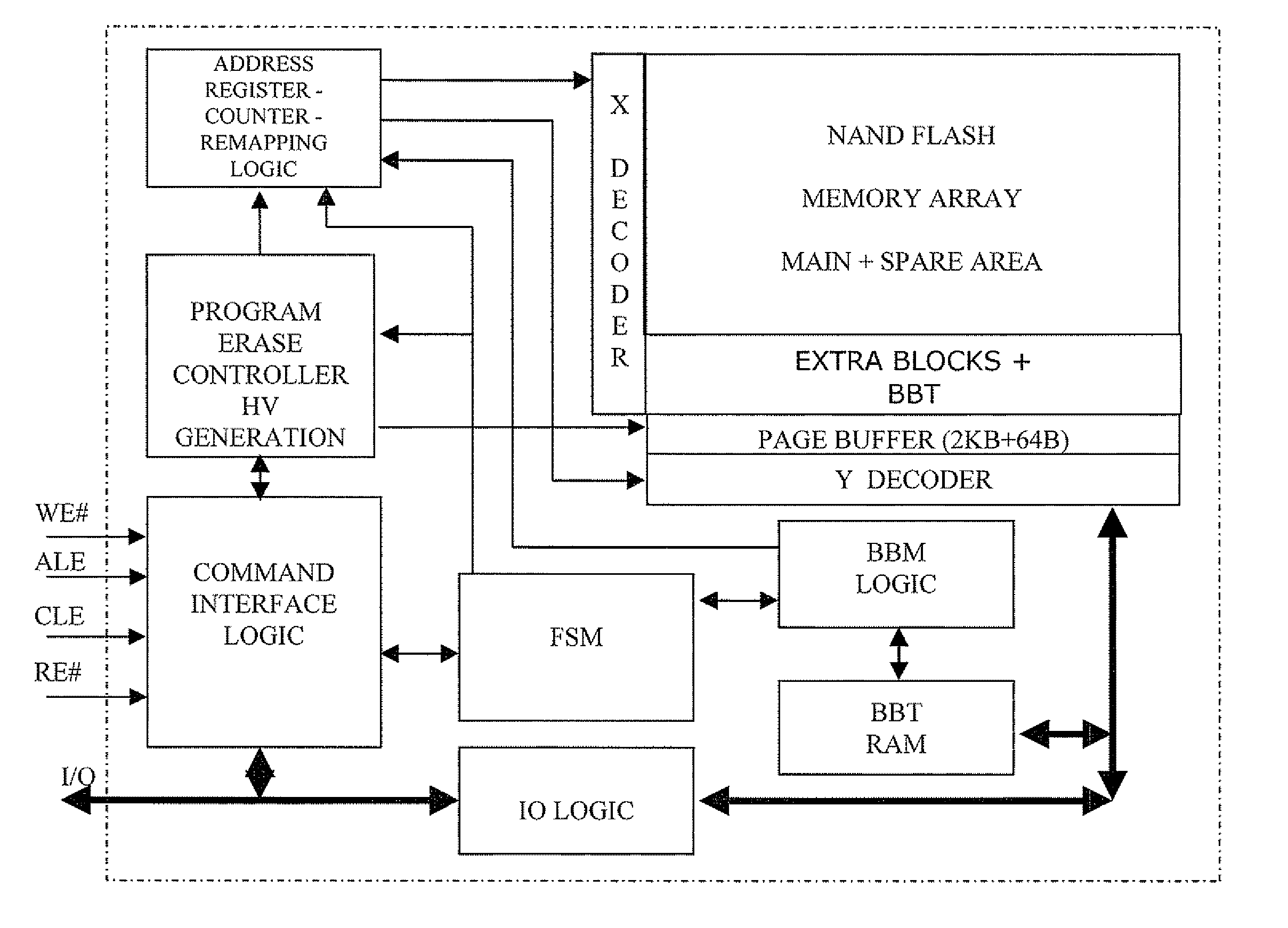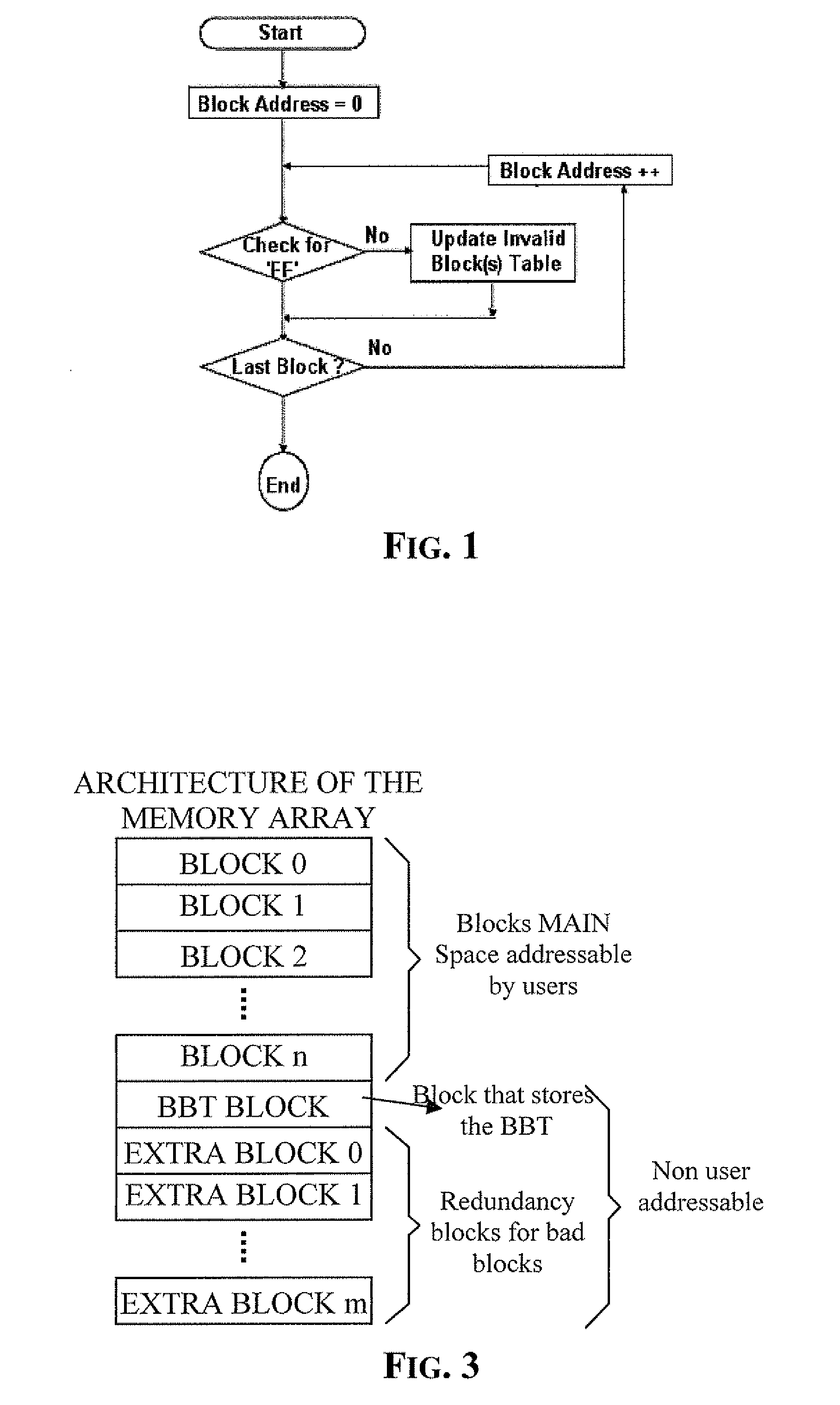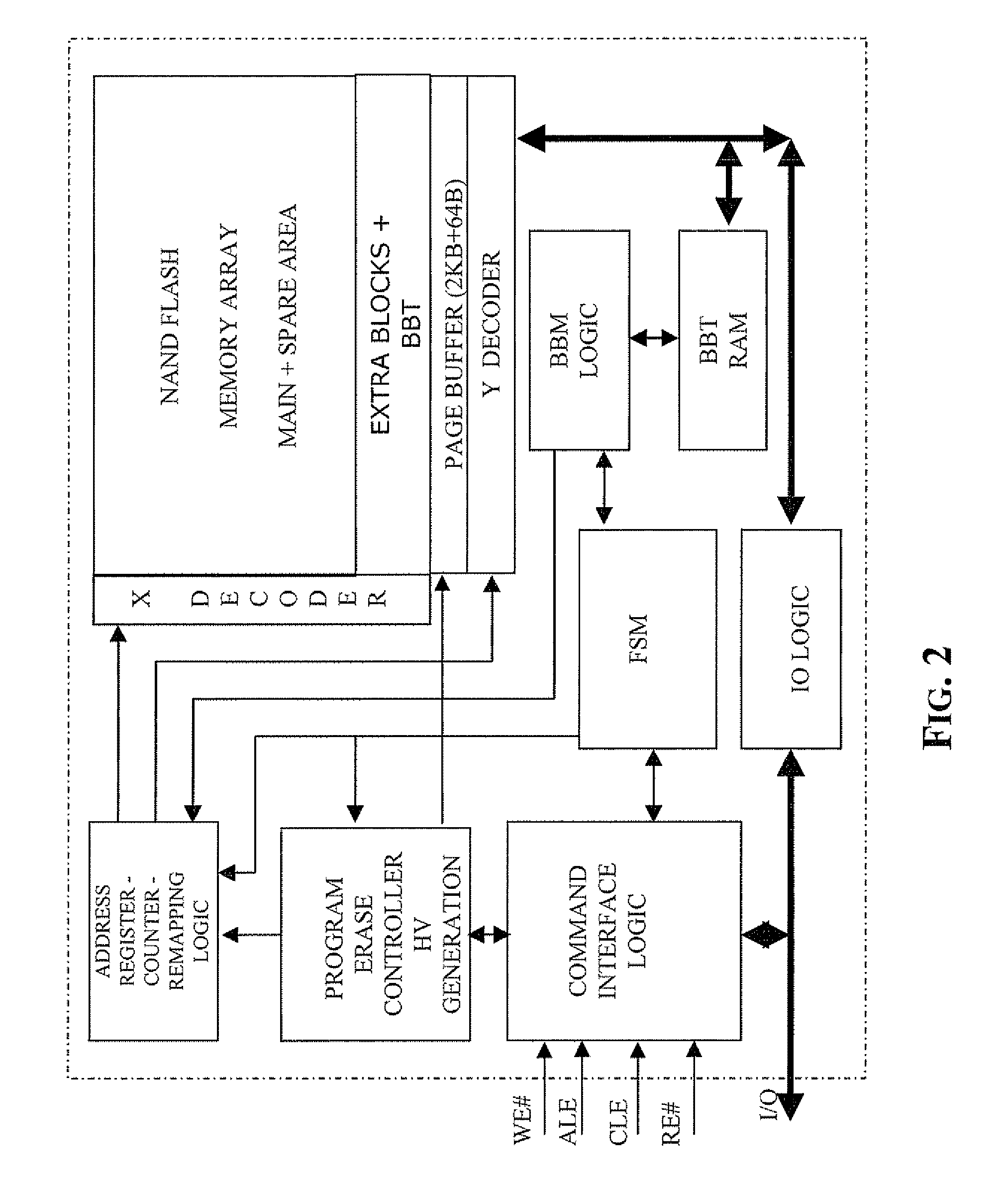Method of managing fails in a non-volatile memory device and relative memory device
a non-volatile memory device and relative memory technology, applied in the field of memory devices, can solve the problems of high voltage damage to the cells, block damage, and intrinsic efficiency problems of the nand flash memory device, and achieve the effect of low cost integration and easy implementation
- Summary
- Abstract
- Description
- Claims
- Application Information
AI Technical Summary
Benefits of technology
Problems solved by technology
Method used
Image
Examples
Embodiment Construction
[0035] A basic architecture of a memory device that implements the method of the invention is depicted in FIG. 2. The array of memory cells is divided into first, second and third subsets. The first subset (MAIN) is composed of user addressable blocks of cells. The second subset (EXTRA BLOCKS) is composed of blocks of redundancy cells. The third subset (BBT) is for storing the table of addresses of bad blocks.
[0036] A fourth subset SPARE AREA of dedicated cells for storing the code (FFh) in a first page of each block acknowledged as good could still be present as a reserved tool for checking the statues, but it is not necessary for the management of fails according to the invention.
[0037] The meaning of the other functional blocks depicted in FIG. 2 is clarified in TABLE 1:
TABLE 1ADDRESSRegister that stores the address of theREGISTERcurrently addressed page.COUNTERAddress counter of the array, used duringalgorithms for accessing the array (read,program, erase).REMAPPINGLogic cir...
PUM
 Login to View More
Login to View More Abstract
Description
Claims
Application Information
 Login to View More
Login to View More - R&D
- Intellectual Property
- Life Sciences
- Materials
- Tech Scout
- Unparalleled Data Quality
- Higher Quality Content
- 60% Fewer Hallucinations
Browse by: Latest US Patents, China's latest patents, Technical Efficacy Thesaurus, Application Domain, Technology Topic, Popular Technical Reports.
© 2025 PatSnap. All rights reserved.Legal|Privacy policy|Modern Slavery Act Transparency Statement|Sitemap|About US| Contact US: help@patsnap.com



